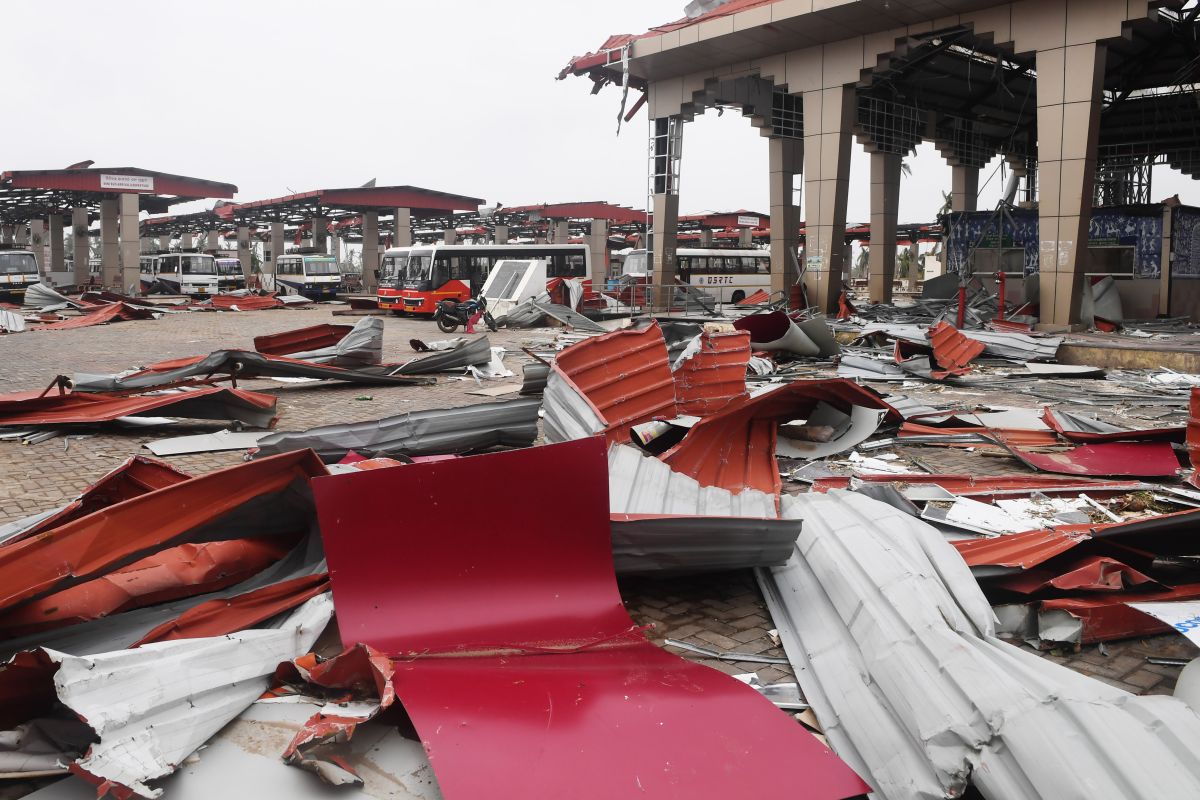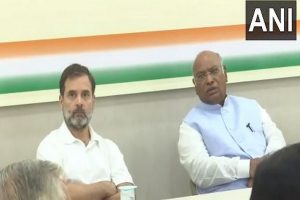How Do You Save a Million People From a Cyclone? Ask a Poor State in India. ~ Headline of The New York Times report on Cyclone Fani (4 May 2019) New York is a long way from Puri, and not merely in terms of distance. In the moment of a natural tragedy, devastated Odisha can well preen its feathers over the venerated NYT’s profoundest compliment to an almost permanently impoverished state.
The ‘poor state’ has excelled. And yet, there has been no blowing of the trumpet by those at the helm of the administration in Bhubaneswar. The word of praise ought ideally to have been advanced in the immediate aftermath ~ not three days after ~ by the Prime Minister and collectively too by the Chief Ministers… in the true spirit of the federal construct. Which is not to forget the Rs 1000 crore advanced by Narendra Modi in course of his aerial survey last Monday.

That said, it did not behove the Chief Minister of West Bengal, at once ebullient and visibly sullen in the season of elections, to remark at a rally in West Midnapore that the “Prime Minister is more destructive than Fani”. Or when she suggests that “Modi should get a tight slap of democracy”. For all the cartoonish absurdity of the campaign, the stakes are lethally high. It is deeply unfortunate that both Mamata Banerjee and Rahul Gandhi on the one hand with Mr Modi at another remove have been engaged in sniper attacks ~ as often as not below the belt ~ at the peak of the crisis, while Mr Naveen Patnaik operates with his quiet efficiency.
The catastrophe and the monumental bandobast by the Odisha administration ought to have transcended the puerile joust and the competitive exchange of invectives within the political spectrum, pre-eminently by Mr Modi, Miss Banerjee, and Mr Gandhi, the Congress president. In the net, the hot air blowing across the campaign trail got precedence over the calamity. And the parable of Cyclone Fani must be that the rest of India and its voluble politicians have much to learn from Odisha, a predominantly rural state that is generally acknowledged to be an investment destination.
The country’s political class, riveted at the moment to securing seats in the national and certain state legislatures, has failed a state that now languishes in unsplendid isolation with the near total collapse of connectivity. The breakdown of the Net has even precluded an accurate calibration of the windspeed. The depression and darkness at noon on 3 May was a phenomenon of Nature; it has now given way to depression in men’s minds and overwhelming darkness after sundown with the collapse of electricity.
Odisha nonetheless has put up a stellar performance, and well might the Biju Janata Dal’s Chief Minister feel vindicated in the context of the decision to go it alone in the general election. Yet there must be a scintilla of hope as the state does have the resilience to recover from what Mr Patnaik calls the “rarest of the rare” calamities. It really is. The district administrations have mounted a colossal effort to bring Odisha back on the rails, both literally and figuratively.
“A cyclone is coming. Get to the shelters,” was the stern warning amplified through the tannoy and backed up with 2.6 million text messages, 43,000 volunteers, nearly 1,000 emergency workers, television commercials, coastal sirens, a huge fleet of buses to convey the dispossessed, massive police deployment, and the public address system blaring the same message in the local language and in a state that boasts a variety of dialects that are specific to the regions.
Altogether it was an exceptional, almost incredible, effort within an awefully short span of time. Clearly, the plan of action was drawn up with a long-term perspective. Forty-one people have perished, which makes it obvious that casualties have been minimal primarily owing to the splendid rescue and relief effort. Considering that mass casualties have been averted, the rescue effort has been an early warning success story.
Central to that success story are the shelters that have come up to dot the Puri landscape in the 20 years since the super cyclone. The most vulnerable people, the state’s subaltern segment, have escaped the brunt. Which is some consolation considering that the agrarian crisis and the distress of the farmers have been ignored by all parties in the campaign stakes. There has been an overkill in terms of the verbal joust, far too little of positive thought and action. The mutual ranting could well have been kept in abeyance as Odisha groped ~ but didn’t flounder ~ in search of its moorings.
On closer reflection, the tragedy was the nation’s. Small wonder that the rehabilitation effort resonates in the echo chambers of meteorologists in the United States of America. By any reckoning, this has been an outstanding achievement, most particularly in a poor state in a developing country, as NYT has referred to Odisha. Meticulous indeed was the plan of action. And it must be conceded that unlike many other administrations, Odisha has learnt from past tragedies, notably the super cyclone and Cyclone Phailin in 2013, when the other sea resort to the south, Gopalpur, suffered a landfall.
It bears recall that 5 lakh people in Gopalpur were evacuated in 2013, an effort that had earned the compliments of the United Nations. Mercifully though, the state, notably the chic capital of Bhubaneswar, has been spared the recurrent fires and bridge collapses to which Kolkata has been no stranger. Millions of people were evacuated to safety ahead of the landfall in the afternoon of 3 May , and with a degree of promptitude that many states would be proud of, but few able to claim.
It redounds to the credit of the BJD government that Odisha has been the first state to put in place an Odisha State Disaster Management Authority (OSDMA), which is backed up by the Odisha Disaster Rapid Action Force. This structural arrangement has ensured an effective response, as immediate as it was concerted. The district administrations had acted with the very first weather forecast on the impending cyclone, reaffirming that there ought to be no chewing over what is to be done between the alert and response.
Perhaps alone in the country, relief volunteers are trained throughout the year and mockdrills conducted. With not dissimilar alacrity, the government will be expected to contain the ballooning food inflation in the aftermath of the cyclone not the least because of the limited purchasing power of people in a predominantly rural state with a sizable swathe belonging to the BPL category.
The overwhelming darkness is as literal as it is figurative in a state that has made the grade as an investment destination and now boasts a unique plan of action. Puri exemplifies the grot of poverty and the glitz of tourism; the devastation has been quite total in the Golden Triangle ~ Puri, Konarak, and Bhubaneswar. For now, Odisha shows the way. It really does. Let India help Odisha. Will she?
(The writer is Senior Editor, The Statesman)












